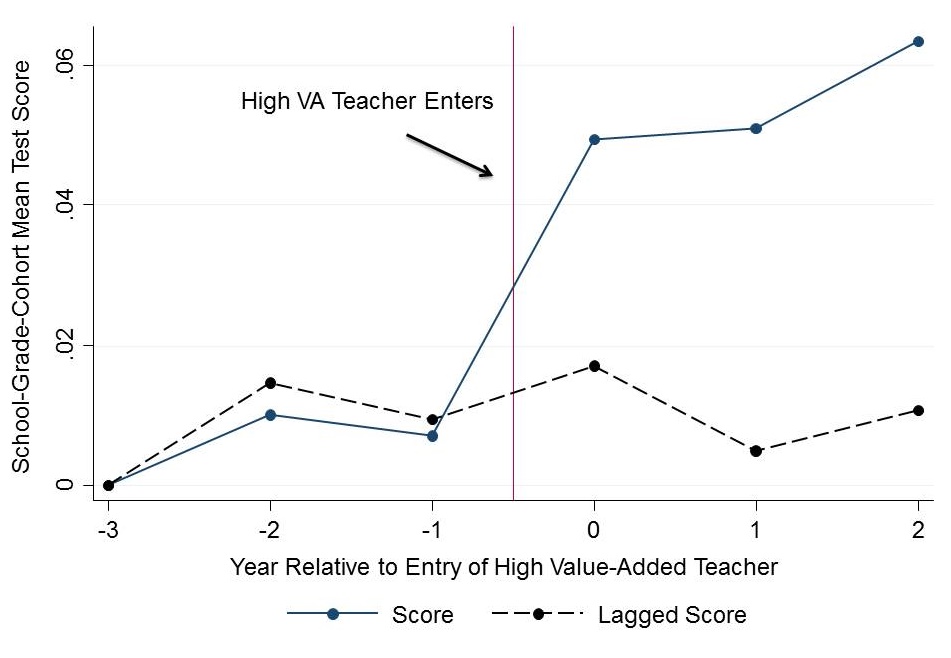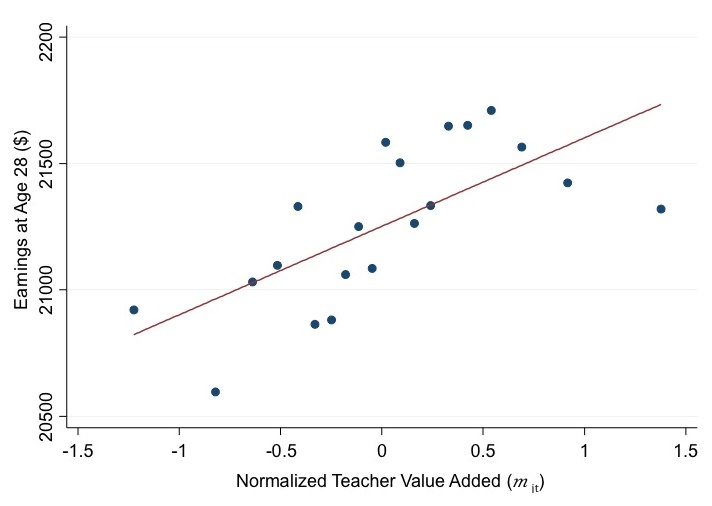Effects of High Value-Added Teacher Entry on Test Scores

Is teacher value-added a good measure of teacher quality?
A teacher's "value-added" is defined as the average test-score gain for his or her students,
adjusted for differences across classrooms in student characteristics (such as their previous scores).
When a high value-added (top 5%) teacher enters a school, end-of-school-year test scores in the grade he or she teaches rise immediately...

Students assigned to high value-added teachers are more likely to go to college, earn higher incomes, and less likely to be teenage mothers. On average, having such a teacher for one year raises a child's cumulative lifetime income by $80,000 (equivalent to $14,500 in present value at age 12 with a 5% interest rate).

The earnings gains from replacing a low value-added (bottom 5%) teacher
with one of average quality grow as more data are used to estimate value-added.
Discounting future earnings gains to present value, the gains are $270,000
with 3 years of data. If future earnings are not discounted, cumulative
earnings gains surpass $1.4 million per class.
We conclude that great teachers create great value, and that test-score
based value-added measures are one useful input into identifying such teachers.
To learn more, see this short video, our executive summary, or our papers (part I, part II) in the American Economic Review.